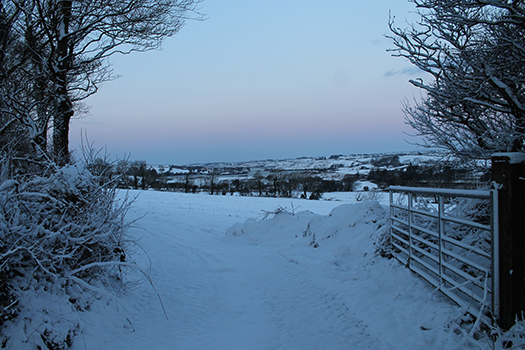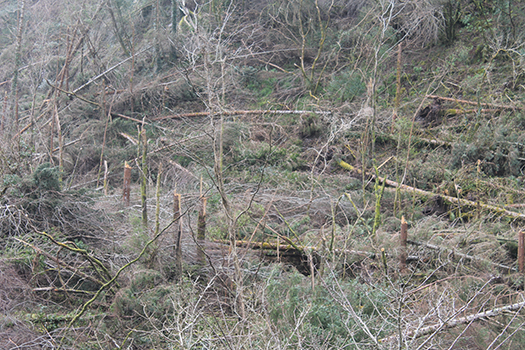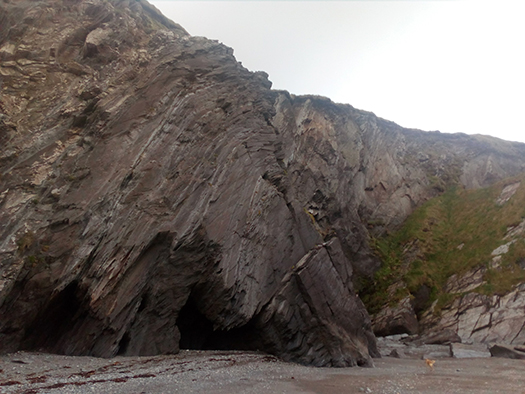
Climate change, though it does occur naturally, is aggravated by certain human activities. Over the past century, carbon dioxide emissions have rapidly increased, affecting air and sea temperatures and sea levels. Such changes affect weather patterns and ocean currents, leading to issues ranging from coastal erosion to non-native species being found outside their usual habitats.
We were interested to know whether people in the local West Cork community had noticed any changes that may have resulted from climate change. Two aspects that were identified were coastal erosion and increased strength of storms.
Storms

Local historian Terri Kearney suggests that ‘the fierceness of the storms, the velocity of them has definitely increased’. Scientific evidence supports this; although the number of storms has decreased in recent years, the intensity of winter storms has increased (Dunne et al., 2008; Sweeney et al., 2003).
Kearney remembers there being a very severe storm in 1976. She suggests that it was probably similar in strength to Storm Brian (a large storm that had just hit Ireland shortly before we spoke to her). However, she thinks that we are more used to storms compared to a few decades ago: ‘it was such a huge deal in those days, you know?’
Coastal Erosion

Storms have a number of effects, one of which is coastal erosion. Terri Kearney refers to the Mam Rua, which used to be an area of commonage on Toe Head:
There are cliffs all along it but where the old path was, it’s completely gone now, and every year you have to go further and further in. It’s just been eroded on one side completely, there’s big chunks of it gone, and it’s very dangerous…
Soft cliffs and sand dunes are the areas worst affected by coastal erosion, with current estimates suggesting that the Irish coast is being eroded by between 0.2m and 1.6m per anum (DELG, 2001).
Terri tells a story of a recent visit to a beach that she and a friend used to frequent when children. It is a striking example of the effects of coastal erosion:
We walked the west of the Eastern Skeams, and that was a beach we used to go to as kids – we’d go around there in a boat. And it’s just completely hollowed out like. And I was going ‘I don’t think this can be the same beach’. And she was going ‘No I don’t think so either, it looks completely different’ and…we went round and we came back and we said, ‘Jesus, no, this is the beach. Completely different. It’s unrecognisable. It’s hollowed out completely and it’s almost like there’s a cliff behind it now where it was sloping down the to the beach. And the actual nature of the beach – it used to be a sandy beach, a sandy, gently-sloping, lovely-to-swim, to-bring-a-boat-in beach – it’s gone all shaley now, with this thing behind, so it’s unrecognisable.
Climate Change and the Community

We have the benefit of understanding the science behind climate change, and it is up to us to take the necessary actions to slow down the changes that affect our planet’s environment.
Our research shows that after pollution, climate change is the environmental issue that people in West Cork are most concerned about. People were quite well-informed about climate change in general, but coastal erosion was an area that they sought more information on.
63% of those surveyed were very or extremely concerned about climate change, but 19% were ‘not at all’ or ‘slightly’ informed about it. (Deep Maps Survey, 2016). Perhaps this is an opportunity for local communities, scientists and policy-makers to discuss concerns and share information.
More Information
Find out more in our Climate Change literature review.
Visit our exhibition on Climate and West Cork from 1700 to the present day.
Read more West Cork community perspectives on environmental priorities.

